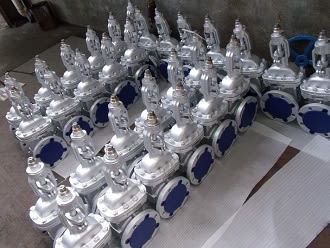Applications of industrial valves
Several folds are expected to increase demand and supply for industrial valves. In commercial building projects as well as automation projects, industrial valves predict applications. The industrial valve market has grown due to aggressive industrialization and the growth and maturity of industrial plants globally.
It is possible to categorize industrial valves into different forms, such as diaphragm valves, globe valves, gate valves, pressure valves, ball valves, check valves, butterfly valves, etc. There are various functions and respective working principles for these types of valves.
Valves for Gate
Gate valves are characteristically designed to operate in industries as insulation valves. They contribute to the regulation and flow of liquid through pipes (particularly that which is heated at high temperatures or cooled at dramatically low temperatures). Gate valves are often used in both domestic and commercial environments and are made of various materials, such as cast iron, stainless steel, forged steel, etc.

As they are used to constantly stop or start the flow of liquids, the material used is used to ensure the valve's strength, reliability, and durability. By raising a circular, rectangular gate out of the direction of the fluid, gate valves run. A gate valve's strength and capability are determined by the size of the diameter of the bore. Globe valves and Double block and bleed valve are considered to be one of the most common valves across a wide range of industries. In regulating and monitoring the linear flow of liquids, they find parallels to gate valves. By regulating the flow within the pipe by placing a movable plug within an immovable frame, globe valves work.
Ball walls
For industries that work with gases, Trunnion ball valve are an excellent choice, as ball valves provide foolproof sealing. Elevated pressures and temperatures may also benefit them. Since their sizes usually vary from 0.5 centimetres to 30 centimetres and they have a simple structure, it is easy to operate and fix ball valves. They have a bad throttling function that is known as both an advantage and a drawback. Owing to weak throttling, the ball in the valve doesn't quickly erode, and there is a smooth flow of particles. Ball valves open and shut quickly, and the multi-way mechanism is versatile.
Butterfly Valves
Butterfly valves have limited flow-regulation capabilities. By rotating the valve by 90 degrees, they can easily operate. In the closed position, the metal disc is a critical element in the valve as it is located perpendicular to the substances' flow. Via intermediate rotations, the control of the flow of the liquid is permitted. To be able to operate electronically, pneumatically and even manually, these types of valves are programmed.
The demand for Industrial Valve is expected to expand due to an expansion in the Gulf Cooperation Countries (GCC) of the oil and gas industries. Development in the iron and carbon black industries is also increasing the market for pipes and thus increasing the worldwide demand for valves. In addition, high demand from manufacturing industries in emerging APAC nations for predictive maintenance is boosting the industrial valve industry.
Comments
Post a Comment